Xiqiao Mountain Scenic Area
Xiqiao Mountain Scenic Spot is located in the southwest of Nanhai District, Foshan City, Guangdong Province, China. It has 72 peaks, forming numerous waterscapes, 232 springs and 28 waterfalls. There are 34 ancient mountains, named after "Yunya Falls" and "Leafless Qingquan", there are 10 places. In addition, there are 42 holes and countless strange cliffs, such as Jiulong. Rock, mushroom stone, Yanyan rock, etc.
Xiqiaoshan Scenic Spot is a national key scenic spot, a national AAAAA tourist area, a National Forest Park and a national geological park.
geographical position
Xiqiaoshan Scenic Spot is situated at 22 degrees 55 to 22 degrees 57 north latitude and 112 degrees 56 to 113 degrees 0 East longitude. It is situated on the western plain of the Pearl River Delta, on the east side of the main road of the lower Beijiang River and on the west side of the main road of the lower Xijiang River. Located in the southwest of Nanhai District, Foshan City, Guangdong Province, it is situated between Guangzhou, Foshan, Shunde, Jiangmen and Gaoming, 68 kilometers away from Guangzhou. The total area of Xiqiao Mountain Scenic Spot is 14 square kilometers, with 72 peaks and 346 main peaks.
Climatic characteristics
Xiqiaoshan Scenic Area belongs to the south subtropical monsoon climate zone, with warm winter and cool summer, mild seasons, abundant water and heat, and abundant rainfall. Warm and rainy climate is its basic characteristics, summer controlled by the subtropical high belt, hot summer, affected by the Southeast monsoon, rich precipitation; winter is relatively warm, the average temperature is about 10 degrees. The annual average temperature is between 21 and 22 degrees Celsius, the coldest monthly average temperature is 13 degrees Celsius, the hottest monthly average temperature is 28 degrees Celsius, and the annual average rainfall is more than 1600 millimeters. The rainfall mainly concentrates in April to September, accounting for about 80% of the annual rainfall.
geological structure
Xiqiaoshan volcanic geologic relic is located in the southwestern end of Sanshui basin. It is a Cretaceous-Neogene intracontinental rift basin with a rhombic NE-trending distribution. It developed at the intersection of the Pearl River Delta and Xiqiao Fault, and is mainly controlled by the EW-trending deep faults. In the geophysical field, it is an east-west upward uplift zone of the upper mantle. Xiqiao Mountain also develops a series of NE, NW and nearly EW faults and joints, which control the structural pattern of the mountain peak. The faults are mostly tense and the boundary is often irregular.
plant resources
Within the scope of Xiqiao Mountain, there are more than 800 species of natural growth and artificial cultivation plants, of which about 400 species are arbors and shrubs. There are 16 families of ferns, 8 families of gymnosperms and 127 families of angiosperms. The ancient and famous trees in Xiqiao Mountain were investigated twice by Nanhai Forestry Bureau in 1992 and Guangdong Forestry Survey and Design Institute in 2000. The resources of ancient and famous trees in the park are very rich. There are 14 families and 28 trees of ancient and famous trees, including 4 figs (Mulberry), 4 kapok (Kapok), 3 maple (Hamamelidaceae) and 1 autumn maple. (Euphorbiaceae), 2 Ginkgo biloba (Ginkgo biloba), 3 Dangui (Oleaceae), 1 Podocarpus grosvenorii (Podocarpus grosvenorii), 1 Mango (Lacqueraceae), 1 Pinus massoniana (Pinaceae), 2 Camphora (Lauraceae), 2 Cinnamomum (Moraceae), 1 Lotus (Camelliaceae), 1 Laughing (Magnoliaceae), 1 Longan (Sarcoideae) One carambola (Oxalis).
The main vegetation types in Xiqiao Mountain are broad-leaved forest, south subtropical Valley rain forest, south subtropical monsoon evergreen broad-leaved forest, subtropical coniferous forest, subtropical coniferous and broad-leaved mixed forest, south subtropical bamboo forest and south subtropical bamboo and broad-leaved mixed forest.
Main attractions
Cloud
sea lotus platform
Located in the center of Xiqiaoshan Scenic Spot, Yunhai Liantai is a large scenic spot with Guanyin Culture as its theme. The main buildings are Guanyin Fa Xiang, archways, film walls, free life pools and reliefs. As high as 61.9 meters, the Avalokitesvara method is the highest statue of Avalokitesvara in the world. Tourists from the north to the entrance, facing a six-pillar and five-door Tianzhu archway, behind the archway is a square, built with a shadow wall, carved with high-quality granite, left and right gates, engraved with the six-character Guanyin truth behind the wall, Chinese by Jiuhua Mountain, Anhui Buddhist Association President Rende handwritten, Tibetan by the living Buddha himself. Write. Veto's statue is carved on the wall. Behind the screen wall is a free-living pool, which is surrounded by white stone balustrades carved with lotus flowers. Crossing the stone arch bridge on the free-living pool, along the 283-level open and orderly stone steps, it can reach the lotus pedestal under the statue of Guanyin.
Baofeng Temple
Baofeng Temple in Xiqiaoshan has a history of more than 600 years and is one of the four famous temples in South Guangdong. Since the Eastern Spread of Buddhism in Jin Dynasty, there have been many eminent monks who built temples and promoted Buddhism in Xiqiaoshan, and the incense flourished in Ming Dynasty. Baofeng Temple is well-known for its rejuvenation and promotion by Master Huilian. The temple was built in 1404 in Yongle, Ming Dynasty, and rebuilt in 1479 in Chenghua. When the Nagu temple was in full swing, it had gone through vicissitudes of life, and now only the broken walls remained.
Baofeng Temple was rebuilt in Shegang, Shipai Village, Xiqiaoshan. The new site is 180 metres long in North and south, 120 metres wide in East and west, covering an area of 21,600 square metres. On the central axis of the temple, the mountain gate and Daxiong Palace are built. Bell Tower, Drum Tower, Guanyin Hall, Tibetan Hall, Manjushu Hall, Puxian Hall are built on both sides, and Abbot building and monk house are built. Architecture is designed according to the style of Ming Dynasty, keeping the original architectural style as far as possible, making Baofeng Temple elegant and simple.
The main hall is the Daxiong Hall of Baofeng Temple. On January 28, 2007, the Daxiong Palace was officially opened to tourists with a solemn inauguration ceremony and the opening ceremony of Buddha statues. Daxiong Palace is dedicated to three treasure Buddhas. There are two halls on the left and right sides of the Daxiong Palace. On the left are the Puxian Palace and on the right are the Manjushu Palace.
Huang Feihong Lion Art Wushu Museum
Huang Feihong Lion Art Wushu Museum is located in Luzhou Village, the birthplace of Huang Feihong, under Xiqiao Mountain, Nanhai City. It covers an area of 5.23 mu. It has unique architecture and has the ancient architectural style of the late Qing Dynasty. In 1996, Huang Feihong Lion Art Wushu Museum was built with Huang Feihong's former residence, Huang Feihong Historic Site Display Film and Television Room, Baozhi Lintang, Acupuncture and Moxibustion Massage, Bone Injury Department Hall, Baicao Hall, Guan Dexing Memorial Hall, and its supporting facilities include Wulin's "Guangdong Ten Tigers" Master Pavilion, Kung Fu, Dragon Dance and Lion Dance, as well as Huang Feihong's traditional Feihong Film and Television City, Huang Feihong Wushu School, Huang Feihong Wushu Village. The building of Huang Feihong Lion Art Martial Arts Hall is square in plane, with the main entrance hall, eaves and cornices, magnificent and simple and solemn. There is a bronze statue of Huang Feihong in the middle of the hall, with Baicao Tang on the right and Baozhilin on the left. Inside the courtyard, the right side is "Guan Dexing Memorial Hall"; the left side is "Huang Feihong Historic Site Showroom"; the front side is "Huang Feihong Baishi Tai"; the middle square is a Lion Art and Wushu Performance Hall.
White cloud cave
Baiyun Cave, located at the northwest foot of the mountain, is one of the 36 caves in Xiqiao Mountain. It is called the confluence of Xiqiao Mountain Scenic Area. Scholars, scholars and Mohists of past dynasties left abundant cultural relics and historic sites for Baiyun Cave, such as Sanhu Academy, Kuiguang Tower, Yunquan Immortal Hall, Baiyun Ancient Temple and a number of Ming and Qing buildings and cliff stone carvings, of which are Xiqiaoyun Waterfall. In the Qing Dynasty, it was listed as one of the eight scenic spots of Yangcheng. Baiyun Cave Scenic Spot, a combination of 24 sceneries, ancient buildings scattered, Baiyun Cave cliff Tiancheng.
Shi Yanyan Scenic Area
The Shiyan Rock Scenic Area is located in the south of Xiqiao Shandong Province. Its main landscape is the remains of ancient quarries. Stone Yanyan Rock is the essence of the scenic spot and the masterpiece left by the ancient quarryman. The mouth of the cave is flat and round, like lips, and it can accommodate thousands of people. The cave is divided into two layers: the outer cave is about a few feet tall and the cave wall is full of sunshine; the inner cave is filled with water and becomes a lake. There are two huge stones in the cave, one is a "water car" and the other is a "seven-color archway". The main attractions of Shiyan Rock Scenic Area are skylight lattice, Shiyan Rock, stone screen, stone ancestral hall, mushroom stone, Jingliangting Pavilion and so on.
Development and utilization
In August 1951, Xiqiaoshan Tianhu Lake Project was completed, which was the first water storage project in Nanhai County after the founding of the People's Republic of China.
On December 12, 1952, construction of Qiaobei Dawei Lianwei and Guanshan Gate, its main project, started simultaneously;
In October 1953, Guanshan Supply and Marketing Co., Ltd. was established;
In June 1956, the first production cooperative of Xiqiao silk weaving was established in Minle, and later developed into the second and third silk weaving factories.
In June 1957, Nanhai Sugar Factory, a state-owned Guangdong province located in Taiping, was built. In the same year, Guanshan Electric Drainage Station was built, and the first 35 kilovolt substation in the county was built.
On January 9, 1958, Xiqiao Agroforestry Demonstration Farm was established;
On March 15, 1967, the state-owned Nanhai Silk Mill went into operation in Xiqiao;
In November 1970, the Guanshan Bridge across Guanshan Chung (initially known as Xiqiao Bridge) was opened to traffic, which was the first local highway bridge built by communes in Nanhai County;
On July 18, 1978, the People's Government of Guangdong Province re-examined and promulgated the Xiqiaoshan Site as a key cultural relic protection unit at the provincial level;
In September 1979, Xiqiaoshan Farm built Panshan Highway;
On September 16, 1980, the Cultural Relics Management Committee of Guangdong Province approved Xiqiaoshan as a provincial cultural relics protection unit, including ancient buildings, ancient tombs, ancient sites, cliff stone carvings and other cultural relics;
On March 3, 1985, the Minle Bridge was completed and opened to traffic. On March 20, the CPC Nanhai County Committee and the Nanhai County Government decided to establish the Xiqiaoshan Tourism Area Construction Committee;
On May 30, 1992, Xiqiao Cultural Center was put into operation; on June 19, Xiqiao Comprehensive Market was put into operation;
Humanistic history
The history of Xiqiaoshan can be traced back to the middle of Neolithic Age, when there were human activities and the creation of "double shoulder stone cultural tools". The fine and practical stone tools and double shoulder stone axes made by Xiqiaoshan have deeply influenced the primitive civilization of the Pearl River Basin and are known as the "beacon of the Pearl River Civilization";
During the Ming and Qing Dynasties, a large number of scholars, including Zhan Ruoshui and He Baiyun, lived in seclusion in Xiqiao Mountain, where they explored Neo-Confucianism and wrote poems and paintings, thus earning Xiqiao Mountain the reputation of "a famous Neo-Confucian mountain in South Guangdong Province";
Xiqiaoshan is also the birthplace of "Nanquan Culture" represented by Huang Feihong. Huang Feihong was born here, practicing martial arts, cultivating morality, and becoming a master of martial arts. In addition, there are also many scholars, such as Qin Mu and Huang Shimin, who leave praise poems here;
The Xiqiaoshan Cultural Site discovered in 1958 is mainly located in the South and central part of Xiqiaoshan Mountains. It is one of the three major stone-making sites in the Neolithic Age in China. After many excavations by Sun Yat-sen University and Guangdong Museum, the unearthed relics are very rich. There are stone anvils, hammers and hammers for processing stone tools. Stone tools for production include stone ball choppers, scrapers, stone axes, stone gongs, stone shovels and so on.
Special food
Xiqiao pie
Xiqiao cake originated in Hongzhi period of the Ming Dynasty. It was round in shape, with a diameter of 20 cm and a weight of 2 kilograms. Its color was white and yellow. The materials include flour, sugar, lard, eggs, and the spring water of Xiqiaoshan Mountain. Its characteristics are soft and sweet, the entrance is loose and fragrant and sweet. Because the cake is shaped like a full moon, which implies a good idea to spend a full moon, Xiqiao people use it as a gift for marriage and celebration.
Chayote
Bergamot melon, also known as hetamelon, is a cucurbitaceous plant, biennial herbs, originated in Mexico, introduced to China in the 19th century, the water and soil of Xiqiaoshan is suitable for the growth of bergamot, mountain villagers are widely planted, long become a specialty of Xiqiaoshan. The Bergamot melon is short conical, with irregular shallow longitudinal ditches on its surface, resembling the bergamot, with green color and sweet melon taste. Because seeds can't germinate after leaving melons, they must be planted in succession. Local people call it "planting melons to get melons". Bergamot melon is rich in nutrients in melon vegetables. It has the functions of dispelling wind and heat, invigorating the spleen and appetizing the stomach. Frequent food is beneficial to enhance the human body's ability to resist diseases.
Landscape bean curd flower
Tofu flower is a snack made of soybeans. Soybean is soaked, ground and filtered out of soybean milk. Coagulant is added to soybean milk. After cooling, it becomes tofu flower. It is a typical Cantonese food. Villagers in Xiqiao Mountain use traditional stone mill and mountain springs in Xiqiao Mountain to make tofu flowers, and then add the honey produced in Xiqiao Mountain, which becomes the unique landscape tofu flowers in Xiqiao Mountain. Regular consumption can enhance children's immunity. Middle-aged and old people can reduce cholesterol, blood lipid, prevent aging and prevent osteoporosis.
Traffic routes
Guangzhou to Xiqiao mountain
Drive 13.5 kilometers along Guangzhou Huancheng Expressway/Shenhai Expressway Guangzhou Branch Line, leave Zhaoqing/Foshan Exit, enter Shenhai Expressway Guangzhou Branch Line, drive 35.5 kilometers along Shenhai Expressway Guangzhou Branch Line (via Shabei Toll Station), turn right from Longjiang/Shatou Exit to S269, drive 3.1 kilometers along Huanshan Avenue and turn right.
Shenzhen to Xiqiao mountain
Drive 51.1 kilometers along the Beijing-Hong Kong-Macao Expressway/G4, leave at the turnout of Humen/Zhongshan/Zhuhai/G9411, turn left at the entrance, enter the Guanfo Expressway, drive 30.2 kilometers along the Guanfo Expressway, enter the Guangzhou Circumferential Expressway, drive 63.2 kilometers along the Guangzhou Circumferential Expressway, leave Xiqiao and enter the S113.
Foshan to Xiqiao mountain
Take the bus to Foshan Hospital of Traditional Chinese Medicine at the railway station, then change to the "Foshan City Bachan City-Gaoming Line" and get off at the "Mountaineering Avenue Pass".
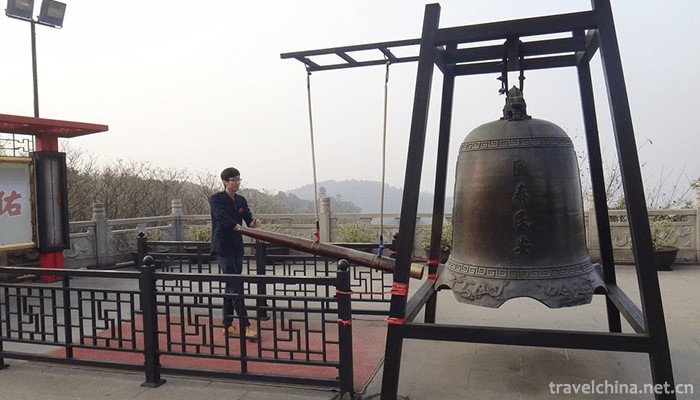
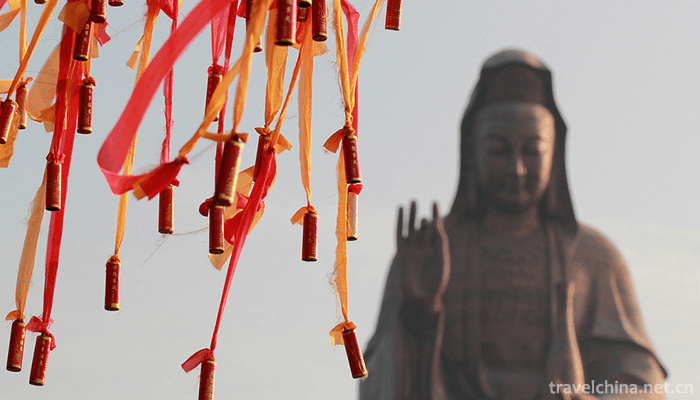


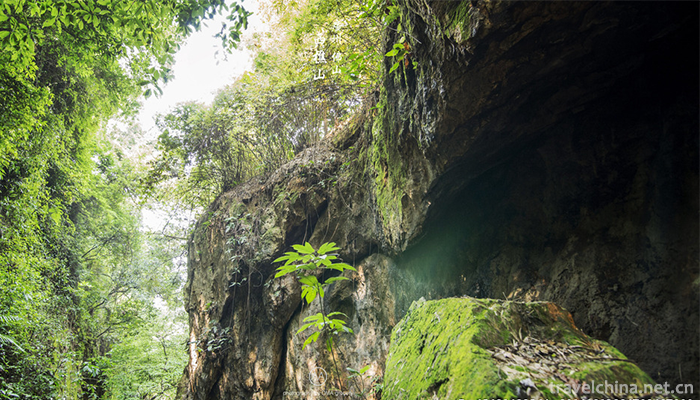

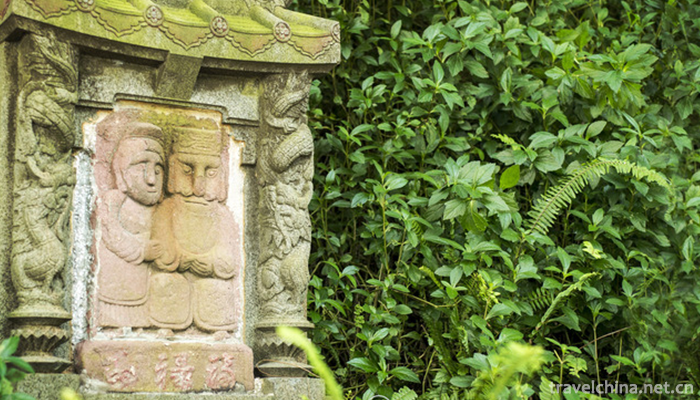



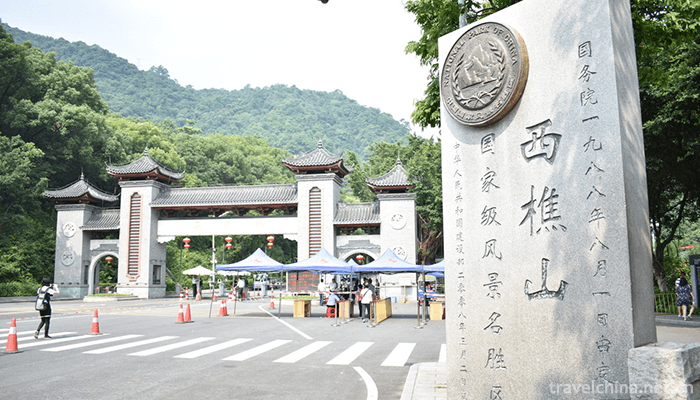
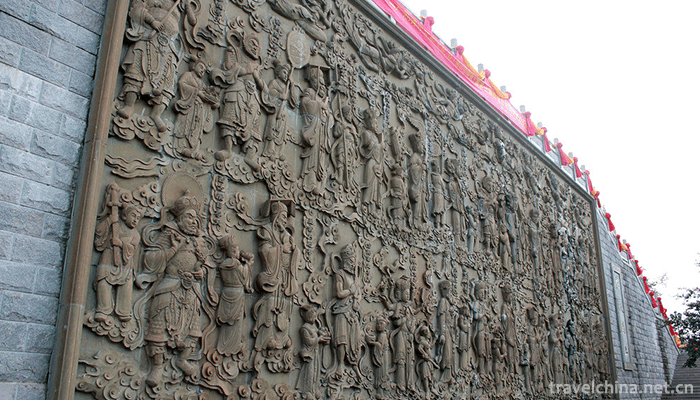
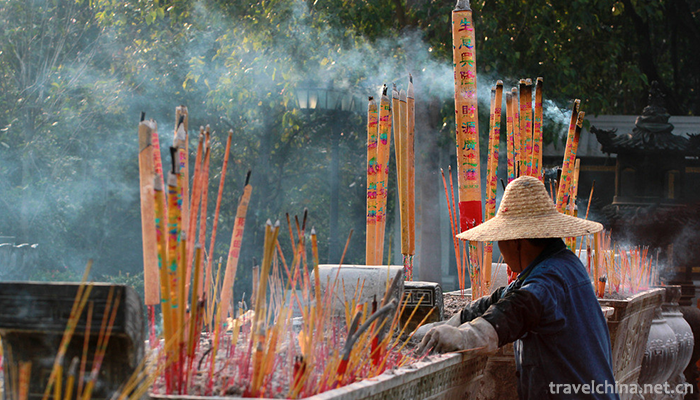
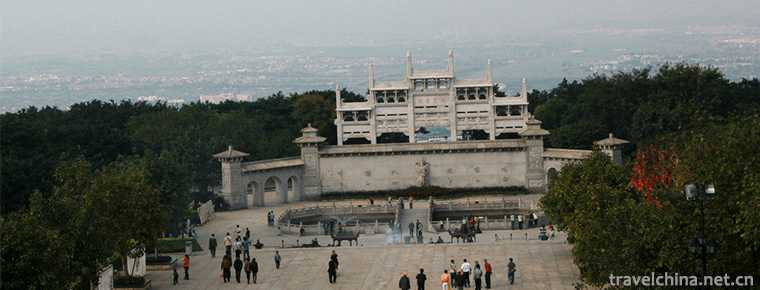
-
1.Aerge Mountains
Mount Alge, A'erge Mountains, a mountain range at the junction of Xinjiang Uygur Autonomous Region, Tibet Autonomous Region and Qinghai Province, China.
Time 2018-11-01 -
2.Kongtong Mountain Scenic Spot
Kongtongshan Scenic Area is located 12 kilometers west of Pingliang City, Gansu Province. It overlooks Xi'an in the east, Lanzhou in the west, Baoji in the South and Yinchuan in the north
Time 2018-12-12 -
3.Beijing Planning Exhibition Hall
Beijing Planning Exhibition Hall, located in Qianmen East Street (east side of old Beijing Railway Station) of Dongcheng District of Beijing, is renovated on the basis of the original building.
Time 2018-12-26 -
4.Beiting Old City Site
The site of Beiting Old Town is the ruins of Beiting Mufu in Tang Dynasty. It is located 12 kilometers north of Jimusar County Town in Xinjiang Uygur Autonomous Region. In ancient times
Time 2018-12-26 -
5.the Gubeikou Great Wall
The ancient Beikou Great Wall is the most complete Great Wall system in the history of China's Great Wall. It consists of the Great Wall of the Northern Qi Dynasty and the Great Wall of the Ming Dynas
Time 2019-01-12 -
6.Song and dance duet
Errentai is commonly known as Dual Items, two classes. Originated in Shanxi and growing up in Inner Mongolia, it is a traditional opera popular in the central and Western Inner Mongolia Autonomous Reg
Time 2019-04-29 -
7.Torch Festival
Torch Festival is an ancient traditional festival of the Yi, Bai, Naxi, Jinuo and Lahu nationalities. It has profound folk cultural connotations and is known as the "carnival of the East".
Time 2019-05-05 -
8.Legend of the Three Kingdoms
The legend of the Three Kingdoms is a kind of folk literature which was approved by the State Council and listed in the fourth batch of national intangible cultural heritage list in 2014.
Time 2019-06-12 -
9.Water Encouragement
Water drum dance is a kind of popular dance spread between the De'ang and Miao nationalities. It combines water, drum and dance to worship ancestors, pray for good weather and peace in villages. Howev
Time 2019-06-15 -
10.Sigangli
Lincang City is located in the southwest of Yunnan Province, which is adjacent to the west, southwest of Yunnan and Myanmar. It has jurisdiction over one district, four counties and three autonomous c
Time 2019-06-16 -
11.Yongchun Paper Weaving Painting
"Yongchun County Chronicle" records: "In the early Tang Dynasty, Yongchun had the production of paper-woven paintings. Yongchun paper weaving painting features: interwoven paper marks,
Time 2019-07-14 -
12.Suining medical and health
By the end of 2019, there are 3725 medical and health institutions in Suining, including 76 hospitals (63 private hospitals) and 3622 primary medical and health institutions; there are 21400 beds in medical and health institutions and 18200 health technicians
Time 2020-12-16